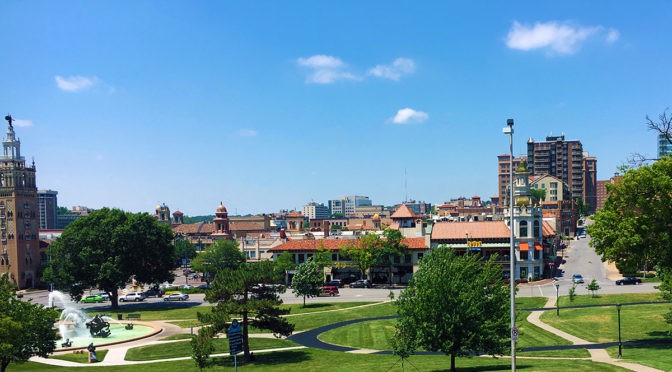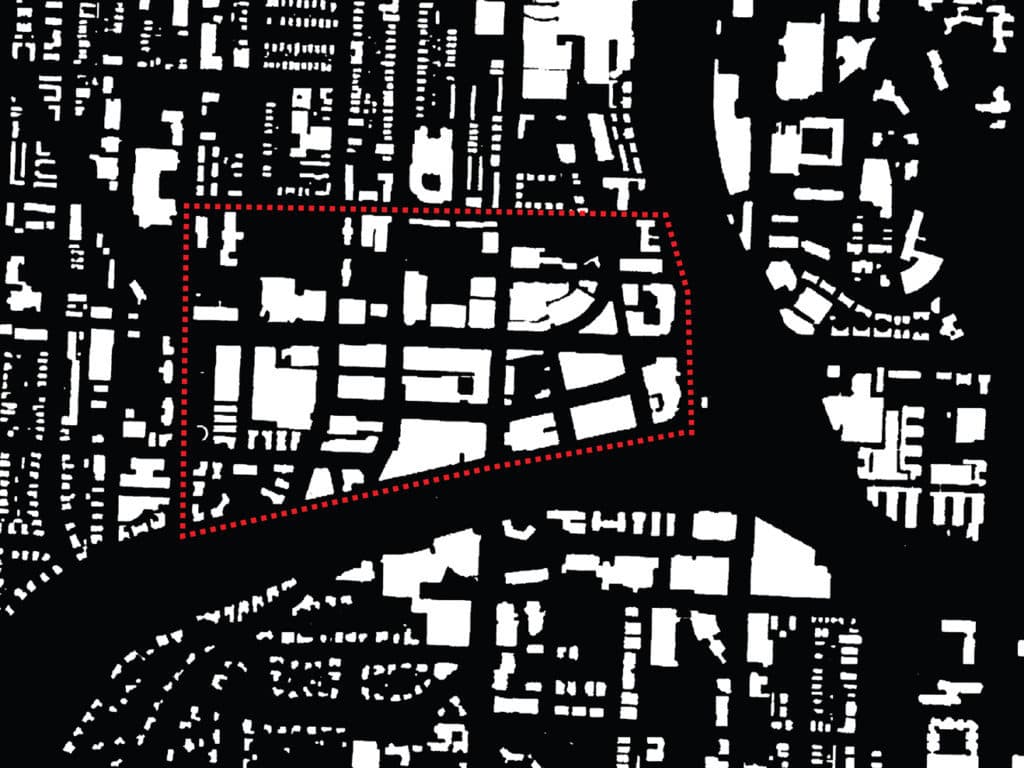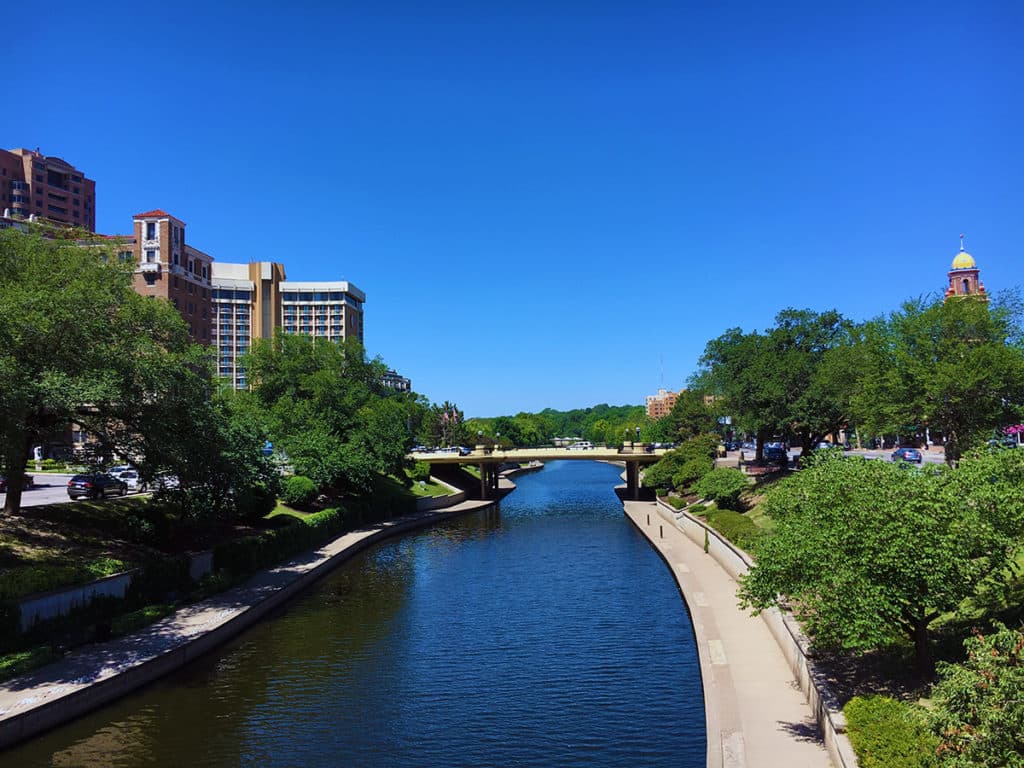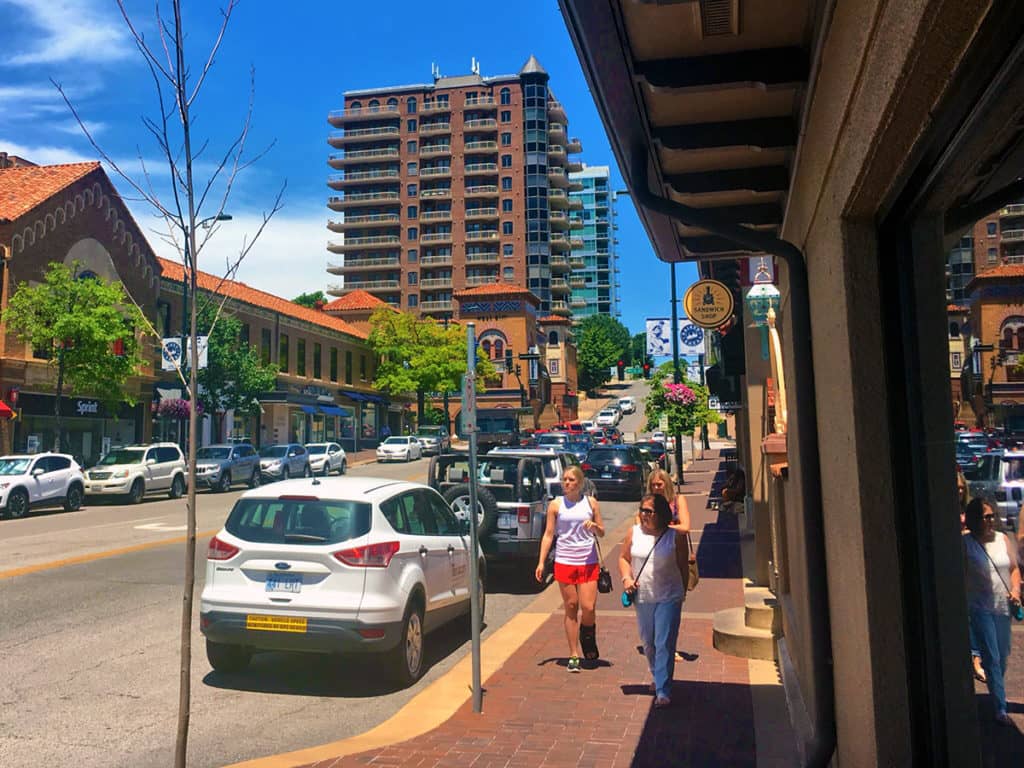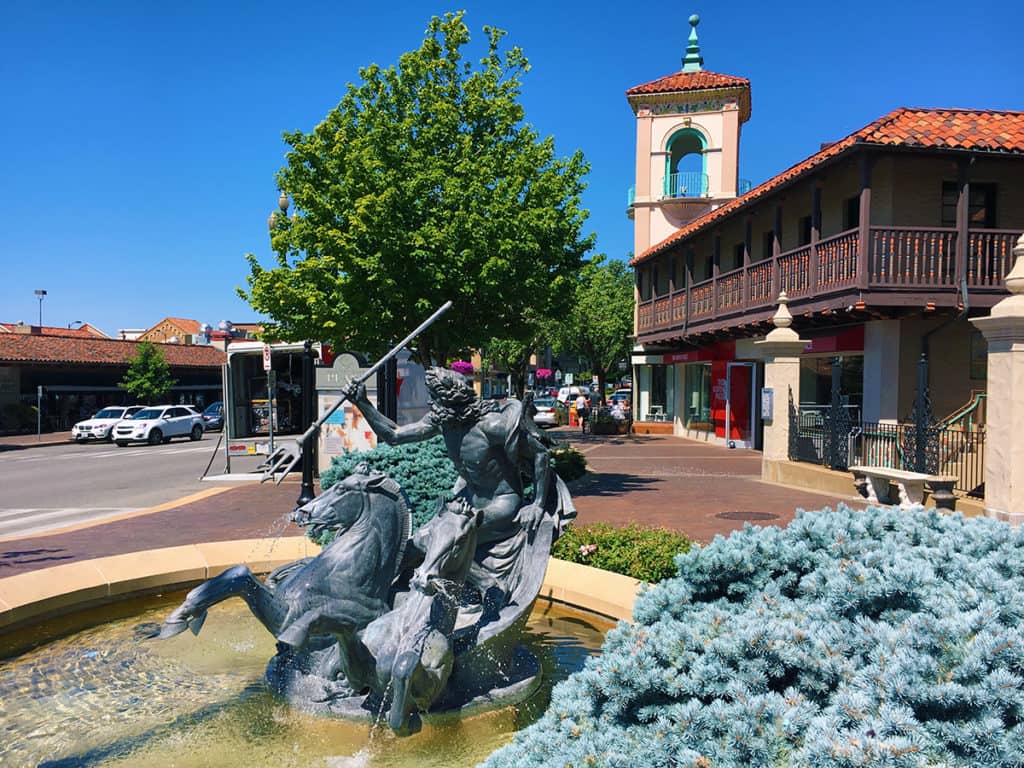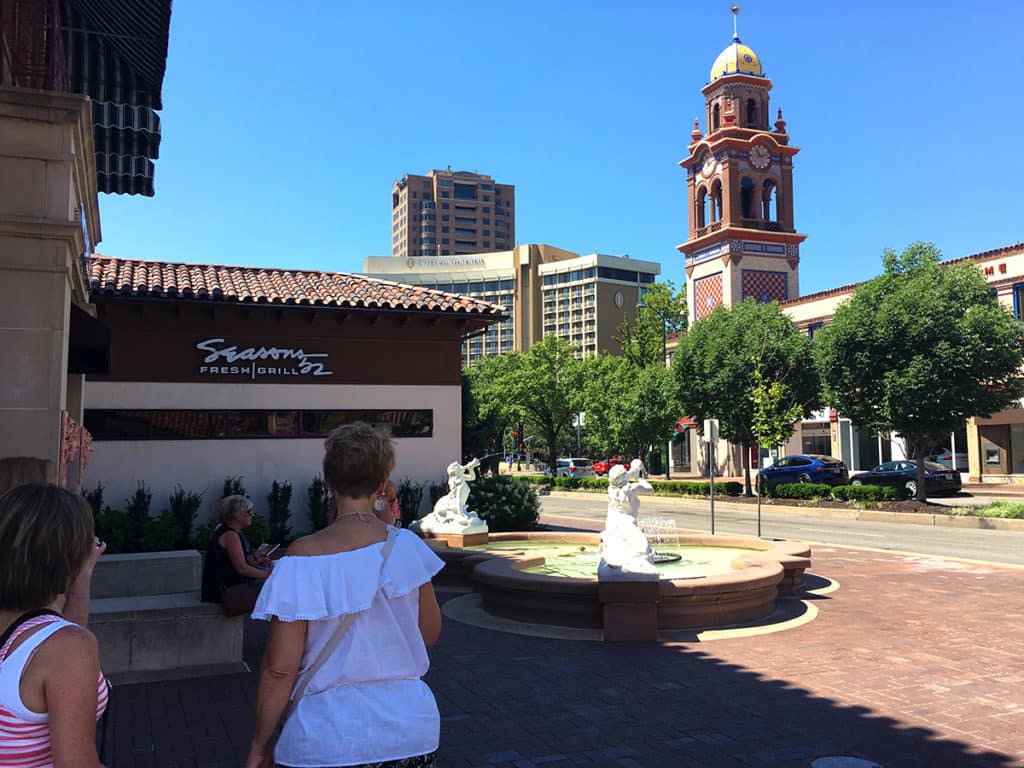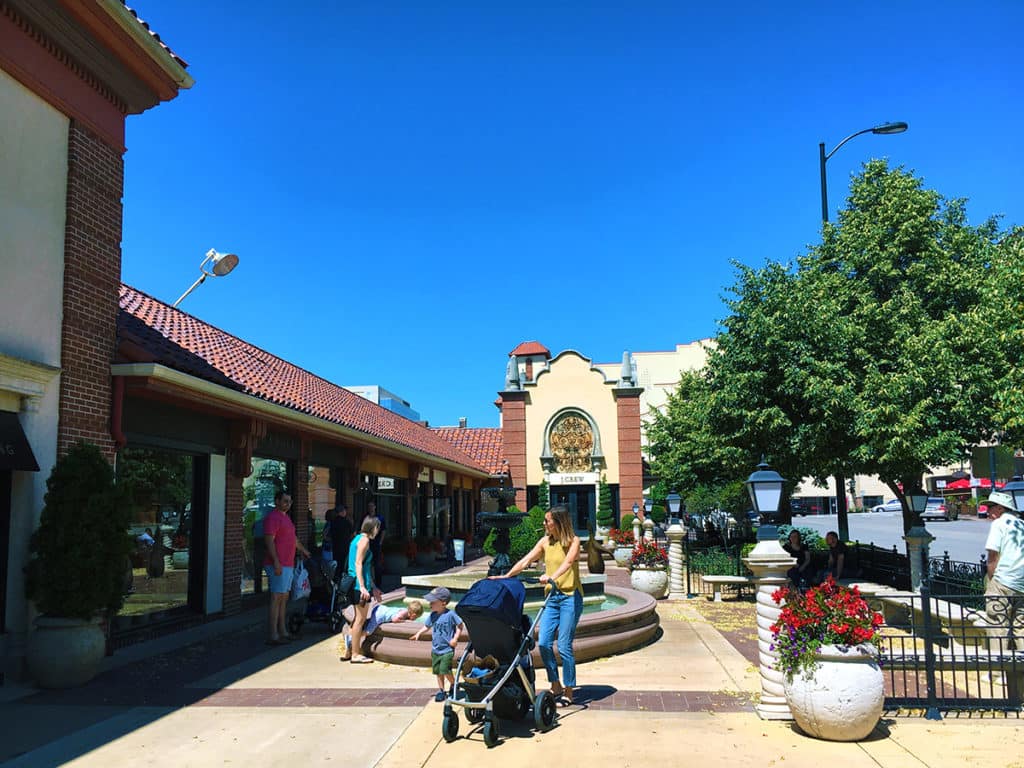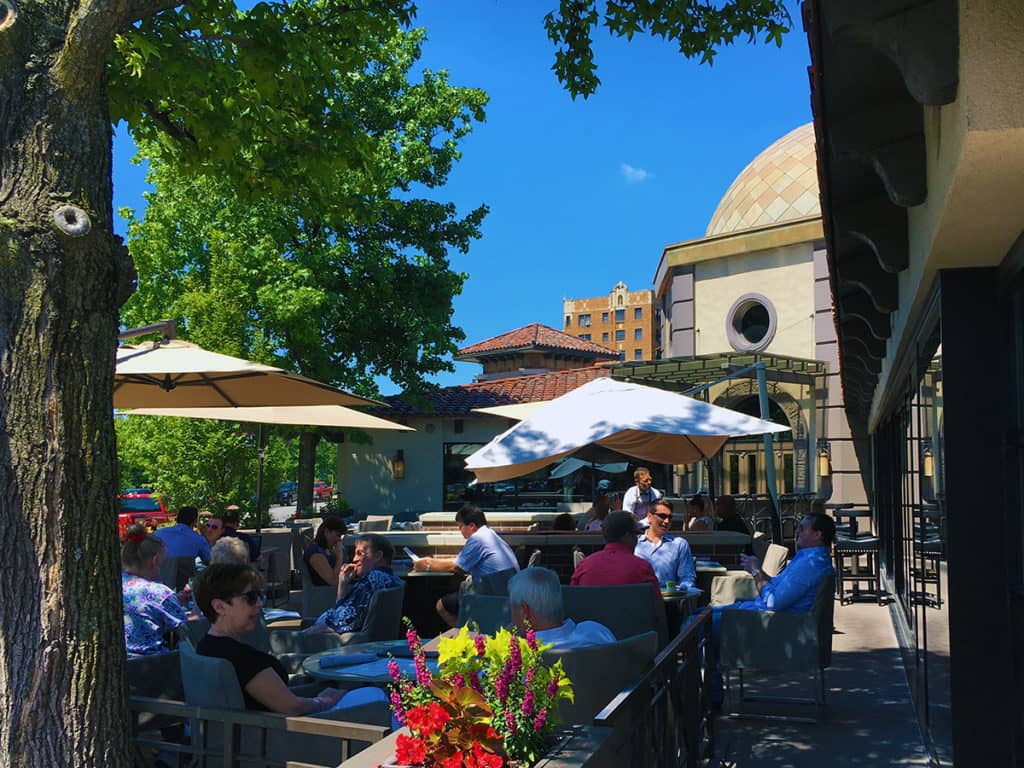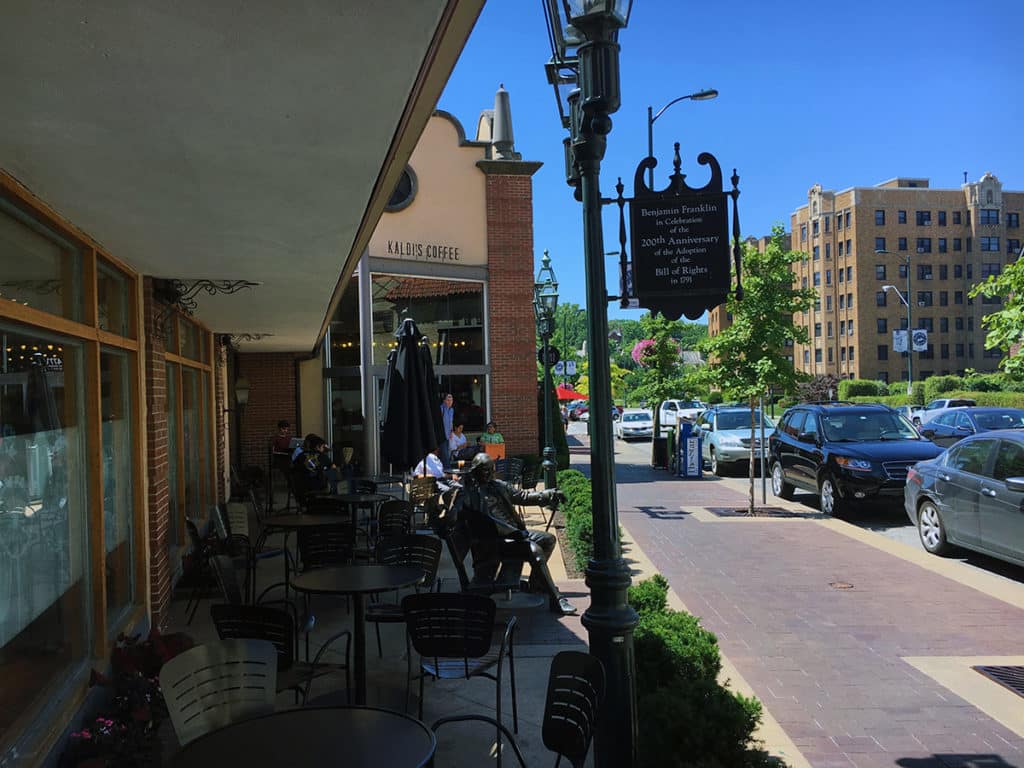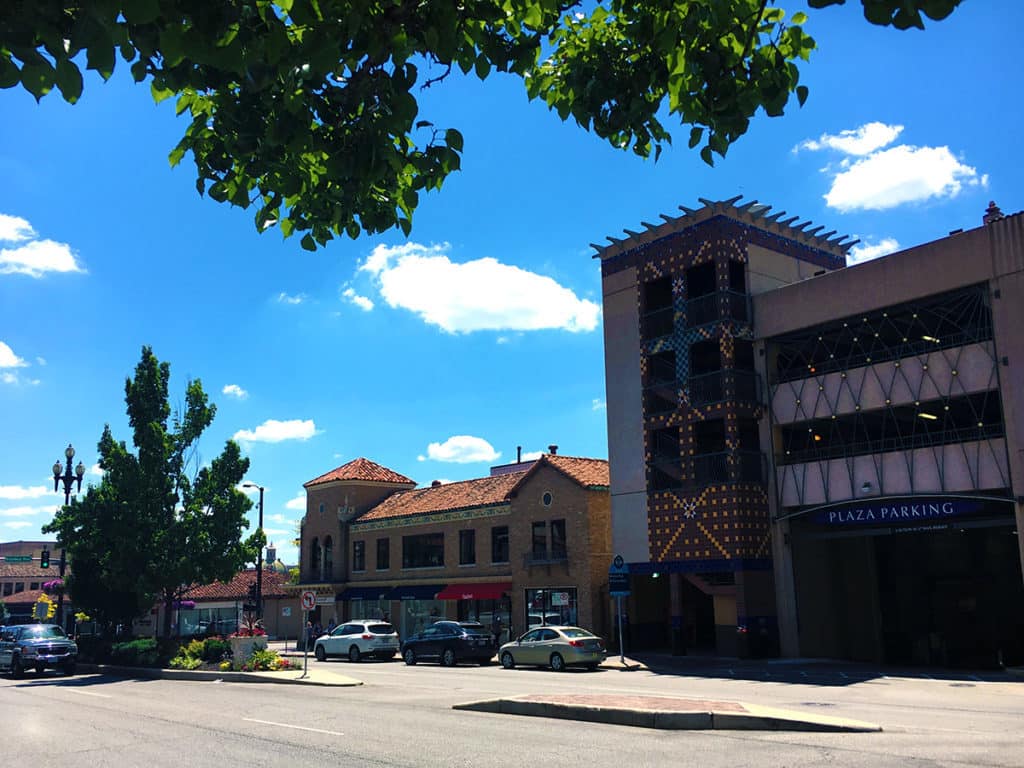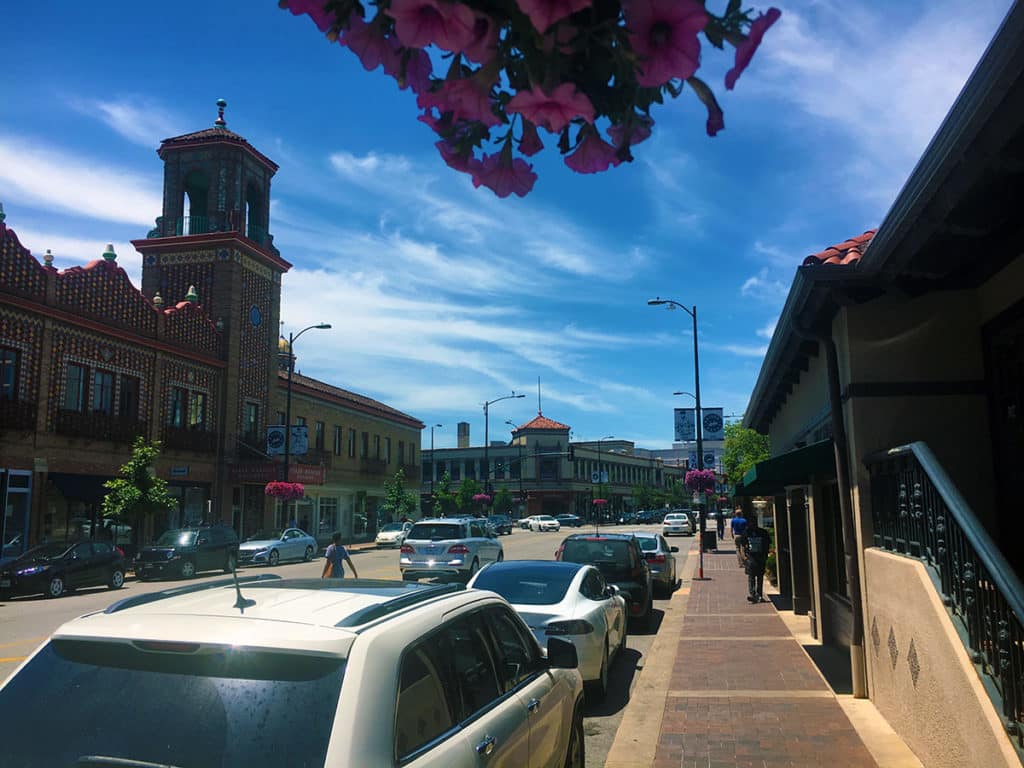“Come on, babe, Why don’t we paint the town? And all that jazz.
I’m gonna rouge my knees, And roll my stockings down,
And all that jazz.
Start the car, I know a whoopee spot, Where the gin is cold,
But the piano’s hot! It’s just a noisy hall, Where there’s a nightly brawl,
And all that jazz.”
— Bob Fosse’s Chicago: The Musical
Urban Patterns | Chicago, Illinois USA
by Dr. Mark David Major, AICP, CNU-A
Chicago is the third-most populous city in the United States with over 2.7 million residents. It is also the most populous city in both the state of Illinois and the Midwestern United States. It is the county seat of Cook County. The Chicago metropolitan area — often referred to as “Chicagoland” — has nearly 10 million people. It is the third-largest metropolis in the United States (after New York and Los Angeles). In terms of wealth and economy, Chicago is considered one of the most important business centers in the world. The town of Chicago was organized in 1833 with a population of about 200 people near a portage between the Great Lakes and the Mississippi River watershed. Within seven years it grew to more than 4,000 people. In mid-1835, the first public land sales began. The City of Chicago was incorporated in 1837. For several decades, Chicago was the fastest growing city in the world. Chicago was one of the five largest cities in the world by 1900. Before the growth of new Chinese cities during the early 21st century, the urban growth of Chicago during the 19th century was largely unprecedented in human history (Source: Wikipedia and The Syntax of City Space: American Urban Grids).
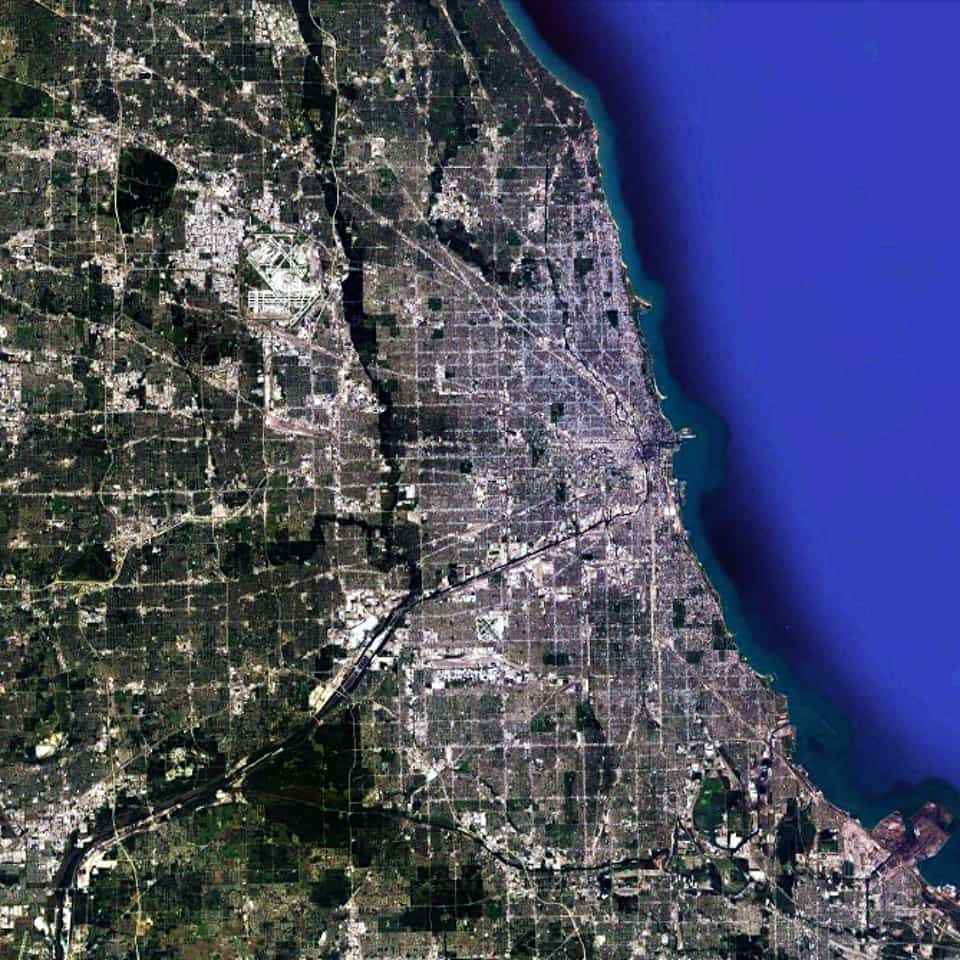
Chicago has the most pervasively-realized regular grid in the world. In fact, the scale of the regular grid in Chicago is so massive that it is almost impossible to truly appreciate its scale. From one extreme to the other, it is probably the size of southeast England or twice the size of the European country of Luxembourg. However, it is only by examining the Chicago urban pattern at this scale that we can truly appreciate that there is a distinctive center-to-edge logic to the metropolitan region; most notably along the alignment of the Chicago River/Stevenson Expressway from the Loop in a southwest direction out of the area. This center-to-edge logic is replicated at the large-scale in the northern metropolitan region as well along the alignment of old Indian trails, which were incorporated into the urban fabric as paved roads; most notably a series of diagonal streets associated with the Northwest Highway out of town towards the state of Wisconsin.
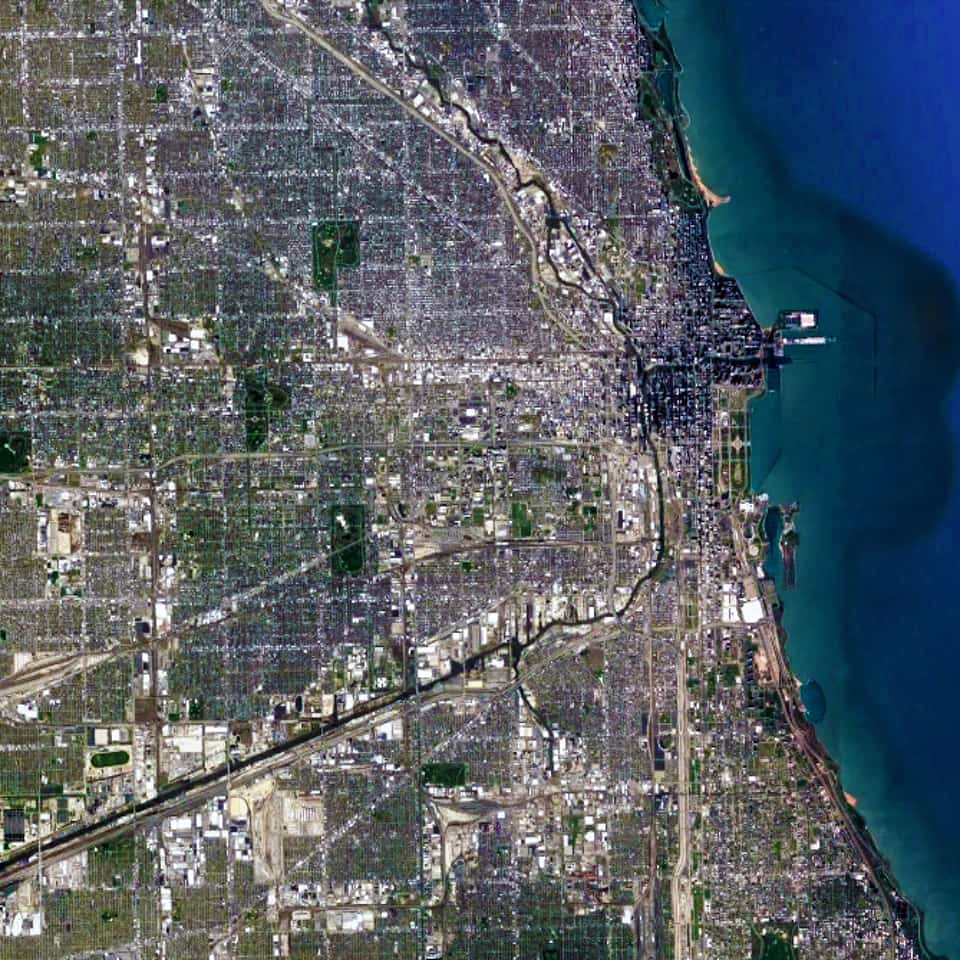
When we zoom in on the Chicago urban pattern, the crucial role of the Chicago River as a water-based transportation artery in the city becomes much more obvious. So does the multitude of skyscrapers in the central business district of the Loop (north and west of Grant Park at the shoreline of Lake Michigan). We can also see the large building footprints of Industrial land uses gathered around the entire length of the Chicago River from the southeast into the center of the city and then northward. All of these topographical, geographical, and infrastructure components are woven together within the ‘relentless’ regular gridiron layout, which serves to privilege downtown Chicago (and, in particular, The Loop) within the larger urban pattern of metropolitan Chicago. This barely begins to scratch the surface of why the Chicago grid plays such a significant role in its magnificence as one of the world’s greatest urban patterns.
Urban Patterns is a series of posts from The Outlaw Urbanist presenting interesting examples of terrestrial patterns shaped by human intervention in the urban landscape over time.

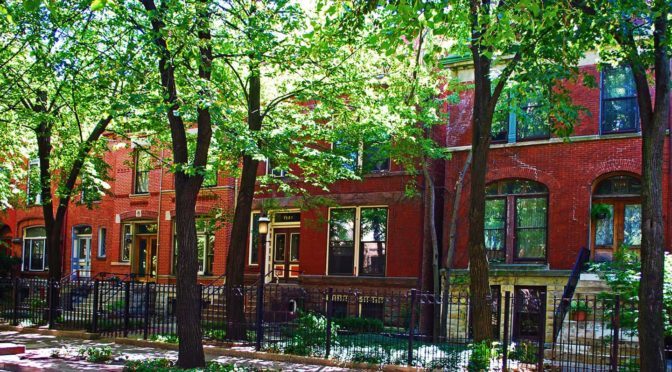
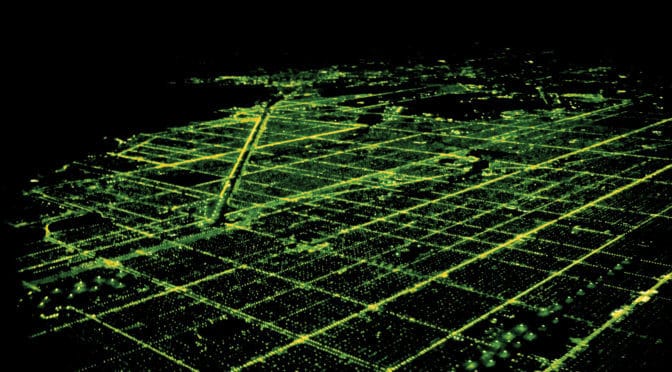
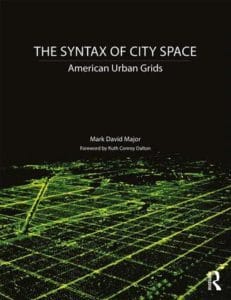
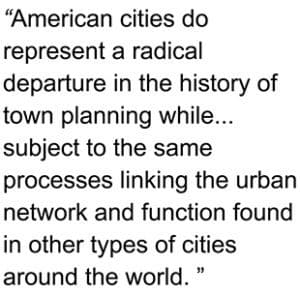 A historical preference for regularity in town planning had a profound influence on American urbanism, which endures to this day.
A historical preference for regularity in town planning had a profound influence on American urbanism, which endures to this day.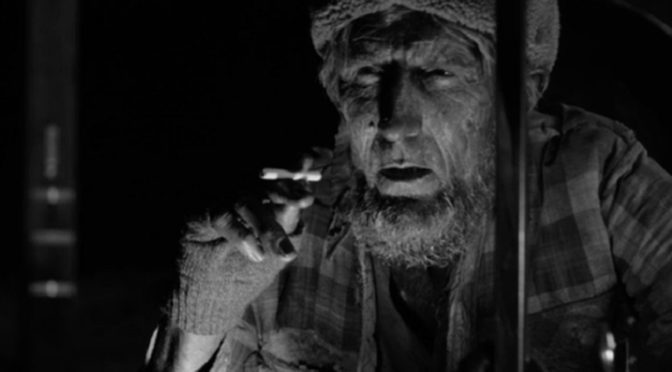
 People point out the similarities between the more abstract, middle section of “Gotta Light?” – when Lynch takes us into the heart of a mushroom cloud at the 1945 climax of the Manhattan Project, which the episode title and request of the Woodsman to strangers repeatedly evoke – to the closing ten minutes of Stanley Kubrick’s 2001: A Space Odyssey. They point the obvious anti-thesis between Arthur C. Clarke/Kubrick’s optimistic vision (
People point out the similarities between the more abstract, middle section of “Gotta Light?” – when Lynch takes us into the heart of a mushroom cloud at the 1945 climax of the Manhattan Project, which the episode title and request of the Woodsman to strangers repeatedly evoke – to the closing ten minutes of Stanley Kubrick’s 2001: A Space Odyssey. They point the obvious anti-thesis between Arthur C. Clarke/Kubrick’s optimistic vision (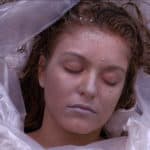 However, this symbolism also offers a clue for viewers to understand that Twin Peaks might have always been about Lynch’s Baby Boomer shame.
However, this symbolism also offers a clue for viewers to understand that Twin Peaks might have always been about Lynch’s Baby Boomer shame.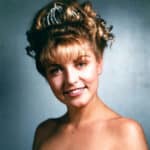 Who was Laura Palmer? She was the promising, archetypal image of Generation X? The straight-A student, Prom Queen, and volunteer for the less fortunate (‘Meals on Wheels’, Audrey’s brother) with a secret life and troubled psyche due, of course, to her Baby Boomer parents.
Who was Laura Palmer? She was the promising, archetypal image of Generation X? The straight-A student, Prom Queen, and volunteer for the less fortunate (‘Meals on Wheels’, Audrey’s brother) with a secret life and troubled psyche due, of course, to her Baby Boomer parents.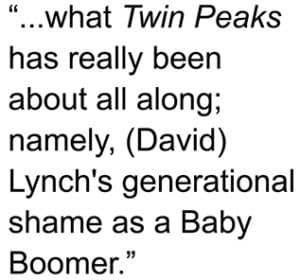 Finally, in the opening scenes of “Gotta Light?” (before everything gets really weird), we witness the murder of Cooper’s doppelganger. The Woodsmen (see header image) appear and engage in a strange ritual, apparently extracting the evil spirit of ‘Bob” as a fetal orb from the body of DoppelCooper. This bloody scene reeks of abortion imagery. Abortion, of course, is one of the most enduring legacies of the Baby Boomers via the Roe v. Wade decision. Lynch’s symbolism in this scene is ambiguous, to say the least. The Woodsmen’s abortion of “Bob” seems to bring DoppelCooper back to life, i.e. children of Baby Boomers (i.e. Generation X) are evil and abortion ‘saves’ lives. However, the character Ray (who shot DoppelCooper) observes this ritual in absolute, moral horror. This ritual apparently allows the evil spirit “Bob” to endure in the Twin Peaks universe, which can’t be a good thing.
Finally, in the opening scenes of “Gotta Light?” (before everything gets really weird), we witness the murder of Cooper’s doppelganger. The Woodsmen (see header image) appear and engage in a strange ritual, apparently extracting the evil spirit of ‘Bob” as a fetal orb from the body of DoppelCooper. This bloody scene reeks of abortion imagery. Abortion, of course, is one of the most enduring legacies of the Baby Boomers via the Roe v. Wade decision. Lynch’s symbolism in this scene is ambiguous, to say the least. The Woodsmen’s abortion of “Bob” seems to bring DoppelCooper back to life, i.e. children of Baby Boomers (i.e. Generation X) are evil and abortion ‘saves’ lives. However, the character Ray (who shot DoppelCooper) observes this ritual in absolute, moral horror. This ritual apparently allows the evil spirit “Bob” to endure in the Twin Peaks universe, which can’t be a good thing.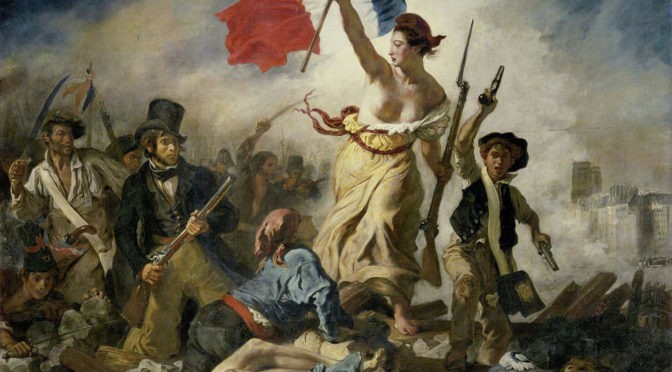
 When you were 18, did you had sex with someone who was 16 or 17? Congratulations, you are a sexual offender. Have you jaywalked? You are a criminal. The insidious genius of a tyranny is convincing the people that their status as criminals is in their own best interests.
When you were 18, did you had sex with someone who was 16 or 17? Congratulations, you are a sexual offender. Have you jaywalked? You are a criminal. The insidious genius of a tyranny is convincing the people that their status as criminals is in their own best interests.